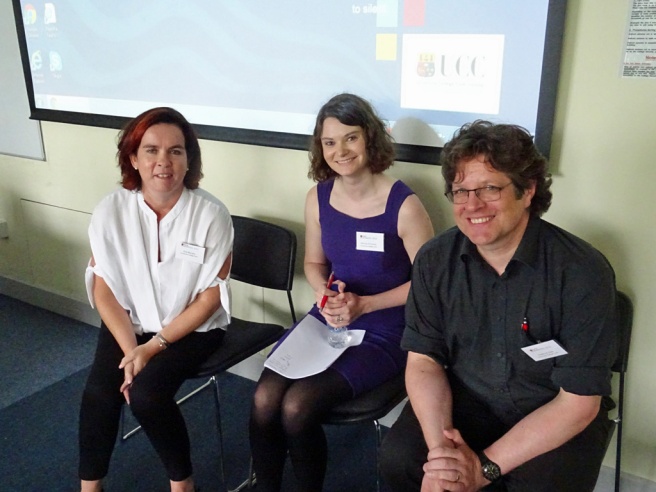On Tuesday 26th July, we presented the World-Tree Project at The International Association for the Study of Irish Literatures‘ conference here at University College Cork. Roderick Dale from the World-Tree Project presented a paper, and Tom Birkett chaired the session which the World-Tree Project sponsored.

First up was Dr Orla Murphy who gave a fascinating paper on ‘Contextualising Knowledge and Making Meaning – Representation and Remediation of Ireland’. The slides for this paper are available online, should you wish to check them out. The paper covered issues of how the academy is not fully digitally native yet, and advocated taking control so that it can be shaped to suit our needs. As part of this approach, Dr Murphy highlighted several projects that are doing this, all of which are mentioned in her project presentation, including DARIAH, for which she is the Irish National Coordinator. She concluded with a call to adopt a dynamic approach to digital humanities, one that moves beyond mere digitisation to take control and embed the literacy needed to make digital humanities especially effective.
Dr Roderick Dale introduced the IRC-funded World-Tree Project in ‘Collecting Ireland’s Viking Heritage with the World-Tree Project’. He explained how it might be used to improve access to knowledge about the Vikings in Ireland, and what challenges face the digital medievalist. He discussed how digital projects might access invisible communities, those that are not online or might not normally consider participating in initiatives like this, by engaging with local libraries and other points of contact within local communities. These contacts can serve to raise awareness and benefit through feedback from the project. He also stressed the need for community collection initiatives like The World-Tree Project to collaborate with those that contribute, and work together with local groups so that all can benefit. The emphasis was on a lateral approach to engaging with communities outside academia, rather than a top-down or bottom-up one.
Patricia O’Connor presented on ‘Researching Medieval Culture in Ireland’s Digital Age’. O’Connor discussed the issues of engaging with the marginalia for the modern reader, using Cambridge, Corpus Christi College, MS 41 as an example. This manuscript has a large number of Old English and Latin marginalia that modern reading practice makes more difficult to access. Patricia discussed accessing the marginalia with specific reference to a Latin Hymn of St. Sechnall at the bottom of the margin on p. 207. This fragment has been much ignored because of its proximity to three cattle-theft charms in the same bottom margin, a problem that was exacerbated by the transfer of the manuscript to print with the marginalia in a separate volume from the main text. The discussion then turned to how this text might appear in a digital edition, and considered the options for increasing the visibility of marginalia such as this through a considered approach to encoding. O’Connor concluded that the debates around encoding are serving to challenge preconceptions about marginalised texts which can serve to raise their visibility.
The panel was a fascinating insight into different areas of the digital, medieval world with each of the papers and much discussion afterwards.

Reblogged this on transparent things.
LikeLike